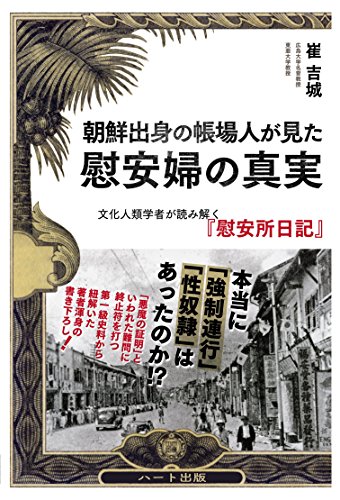1 0 0 0 ゼロエミッションのための汚泥の工業原料化技術
- 著者
- 中崎 清彦 安達 友彦
- 出版者
- 社団法人 環境科学会
- 雑誌
- 環境科学会誌 = Environmental science (ISSN:09150048)
- 巻号頁・発行日
- vol.13, no.5, pp.570-578, 2000-12-31
- 参考文献数
- 18
- 被引用文献数
- 2
多くの産業で排水処理施設から大量の汚泥が排出されている。汚泥を工業原料に変えて他の産業で使用するネットワークの構築はゼロエミッションへの一段階である。本研究では排水処理過程で排出される汚泥から生分解性プラスチックの原料であるL-乳酸の生成を試みた。製紙工場から排出される汚泥はセルロースの含有量が高く,糖化と発酵の組み合わせでL-乳酸の生成が可能であること,また,セルロースの糖化にともなって生成するグルコースによる酵素反応阻害の低減には同時糖化発酵法の適用が有効であり,温度40℃,pH5.0の最適条件下で9.779/Lの高濃度L-乳酸が生成できることを明らかにした。
1 0 0 0 OA 雄馬の繁殖生理に関する研究
1 0 0 0 OA 海外レースの馬券発売をめぐる課題 : 競馬法の一部を改正する法律が成立
1 0 0 0 OA 日本の種牡馬の死亡原因に関する回顧的調査
1 0 0 0 OA すぐに役立つ願届書式大全
1 0 0 0 OA 判決総攬
- 著者
- 判決例調査所 [編]
- 出版者
- 判決例調査所
- 巻号頁・発行日
- vol.民法 続 第3 下, 1935
1 0 0 0 OA 一家に一冊必要な人事百般の法律知識
1 0 0 0 OA 改正民法と新戸籍法の解説
- 著者
- 地方行政実務研究会 編
- 出版者
- 大化書院
- 巻号頁・発行日
- 1948
1 0 0 0 環境経済効果に基づいた浄水汚泥と砂質土の混合利用
- 著者
- 渡邊 保貴 小峯 秀雄 安原 一哉 村上 哲 ベ ジェヒョン 豊田 和弘
- 出版者
- 公益社団法人 土木学会
- 雑誌
- 土木学会論文集C
- 巻号頁・発行日
- vol.66, no.4, pp.788-799, 2010
水道事業から排出される浄水汚泥を道路構成材料として有効利用する上で,浄水汚泥の排出量が少量であることから一般の土質材料と混合して利用することが検討されている.しかしながら,こうした混合利用の効果は力学的側面から検討されることが多く,環境負荷低減の側面からは十分に検討されていない.本研究では,最終処分量の削減や天然資材の保全の観点から浄水汚泥の環境価格を定義し,浄水汚泥を砂質土と混合利用したときの環境負荷低減効果を貨幣価値に換算した.その結果,浄水汚泥の混合利用は必ずしも環境負荷低減に結びつかず,浄水汚泥を単体で利用することが最も望ましいこと,そして,浄水汚泥を混合する場合には,混合する天然資材の量を減少させることが重要であることを示した.
1 0 0 0 政治学者と政治家のあいだで:決断・対応・目標の政治学
- 著者
- 蒲島 郁夫
- 出版者
- 日本選挙学会
- 雑誌
- 選挙研究 (ISSN:09123512)
- 巻号頁・発行日
- vol.32, no.1, pp.61-76, 2016
1 0 0 0 OA サツマイモネコブセンチュウおよびキタネグサレセンチュウの各種作物における寄生性
- 著者
- 清水 啓 後藤 昭
- 出版者
- 関東東山病害虫研究会
- 雑誌
- 関東東山病害虫研究会年報 (ISSN:03888258)
- 巻号頁・発行日
- vol.1979, no.26, pp.139-140, 1979-12-01 (Released:2010-03-12)
1 0 0 0 OA 海洋生物の毒の化学構造と生態学的起源
- 著者
- 安元 健
- 出版者
- 公益社団法人 日本農芸化学会
- 雑誌
- 化学と生物 (ISSN:0453073X)
- 巻号頁・発行日
- vol.43, no.3, pp.153-159, 2005-03-01 (Released:2009-05-25)
- 参考文献数
- 17
- 被引用文献数
- 2 1
1 0 0 0 OA Changes in and challenges regarding the surgical treatment of hepatocellular carcinoma in China
- 著者
- Dongming Liu Tianqiang Song
- 出版者
- International Research and Cooperation Association for Bio & Socio-Sciences Advancement
- 雑誌
- BioScience Trends (ISSN:18817815)
- 巻号頁・発行日
- pp.2021.01083, (Released:2021-03-14)
- 参考文献数
- 28
- 被引用文献数
- 29
Hepatocellular carcinoma (HCC) is a common malignant tumor with a high morbidity and mortality in China and elsewhere in the world. Due to its tumor heterogeneity and distant metastasis, patients with HCC often have a poor prognosis. A surgical treatment such as a radical hepatectomy is still the treatment of choice for patients with HCC in current clinical practice. However, the high rate of recurrence and rate of metastasis after surgery diminishes the survival of and prognosis for these patients. In an era of targeted therapy and immunotherapy, the surgical treatment of HCC must change. This review focuses on the definition, feasibility, and criteria with which to evaluate neoadjuvant therapy for HCC in order to provide a new perspective on surgical treatment of HCC.
- 著者
- Yasuhiko Sugawara Taizo Hibi
- 出版者
- International Research and Cooperation Association for Bio & Socio-Sciences Advancement
- 雑誌
- BioScience Trends (ISSN:18817815)
- 巻号頁・発行日
- pp.2021.01094, (Released:2021-03-19)
- 参考文献数
- 33
- 被引用文献数
- 71
Hepatocellular carcinoma (HCC) is one of the most common cancers in the world, and cirrhosis is a risk factor for HCC. Resection is indicated for those unilobar tumors without vascular invasion and metastases in the liver and preserved liver function. Small HCC (< 2 cm) without microvascular invasion is associated with a 5-year recurrence rate as high as 50% to 60%, whereas liver transplantation is indicated for those within the Milan criteria (solitary tumor ≤ 5 cm or two or three nodules ≤ 3 cm) who have decompensated cirrhosis. The 1-, 3-, and 5-year survival rates of living donor liver transplantation for HCC are 85%, 75%, and 70%, respectively. This review summarizes the scientific evidence supporting the clinical practice recommendations for patients with HCC, and it discusses surgical treatment of HCC.
- 著者
- Jun Chen Hongzhou Lu
- 出版者
- International Research and Cooperation Association for Bio & Socio-Sciences Advancement
- 雑誌
- BioScience Trends (ISSN:18817815)
- 巻号頁・発行日
- pp.2021.01092, (Released:2021-03-19)
- 参考文献数
- 20
- 被引用文献数
- 33
Despite strict control measures implemented worldwide, the COVID-19 pandemic continues to rage. Several drugs, including lopinavir/ritonavir, hydroxychloroquine, dexamethasone, and remdesivir, have been evaluated for the treatment of COVID-19 during the past year. While most of the drugs failed to display efficacy in treating COVID-19, scientists have encouraged herd immunity to control the pandemic. Immunity generated after natural infection with SARS-CoV-2 is precarious, as indicated by real-world evidence in the form of epidemiological data from Manaus, Brazil. Vaccines using different platforms are therefore the most promising approach to help us return to normality. Although several vaccines have been authorized for emergency use, there are still many concerns regarding their accessibility, the vaccination rate, and most importantly, their efficacy in preventing infection with emerging virus variants. Continued virus surveillance and rapid redesign of new vaccines to counter new variants are crucial to fighting COVID-19. Rapid production and extensive vaccination are also essential to preventing the emergence of new variants. Nevertheless, antivirals including monoclonal antibodies and oral medicines need to be developed in light of uncertainties with regard to vaccination. In the battle between humans and SARS-CoV-2, the speed with which we fight the virus, and especially its emerging variants, is the key to winning.


